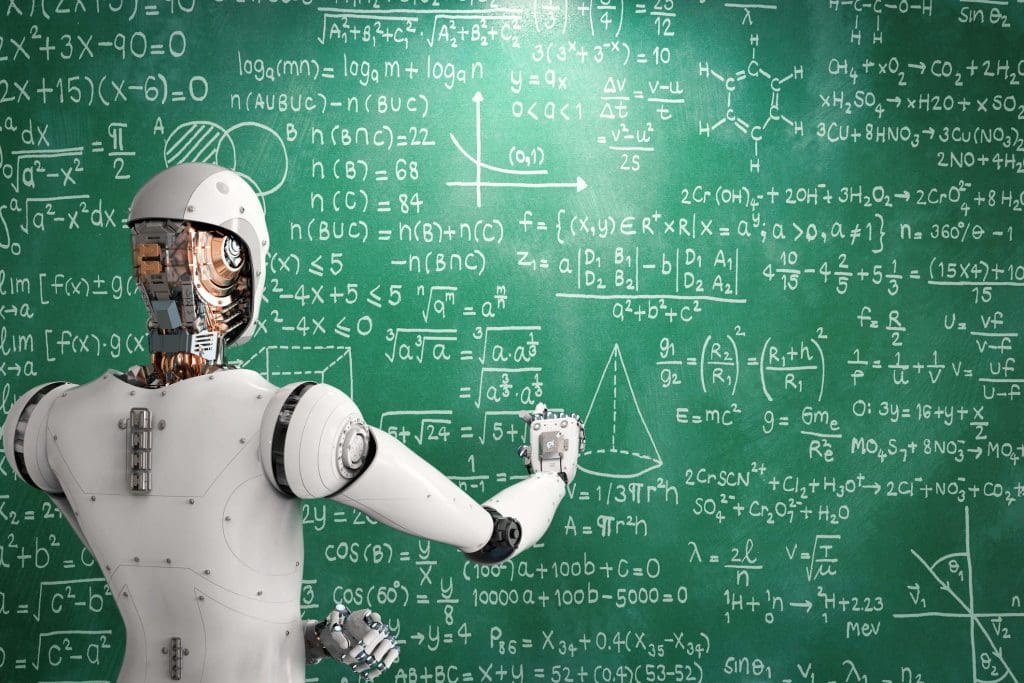By Prof. MM Pant
Former Pro-Vice-Chancellor
Indira Gandhi National Open University

The discourse on AI and allied technologies has moved away from whether it is friend or foe to vying for a leadership position in the field. While there is competition between nations on the number of patents they have in the field, and the number of AI professionals they have, many countries have realized the importance of raising AI awareness in a larger part of their population.
Sir John Ziman began the Preface of his well-known book “Principles of the Theory of Solids” (1964 edition), with the following opening lines: “The frontiers of knowledge (to coin a phrase) are always on the move. Today’s discovery will tomorrow be part of the mental furniture of every research worker. By the end of next week it will be in every course of graduate lectures. Within a month there will be a clamor to have it in the undergraduate curriculum. Next year, I do believe, it will seem so commonplace that it may be assumed to be known to every schoolboy.”
Those words are squarely applicable today to the field of Artificial Intelligence and Machine Learning, and it is now reasonably clear that all University students and even our school children must be acquainted with the key concepts and aware of the latest tools in the field of AI. And of course all adults must be in lifelong learning and keep abreast of these developments. Only then will we be ready for Globalization 4.0 driven by AI.
There have been a couple of interesting books recently that deal with AI superpowerdom. AI Superpowers: China, Silicon Valley, and the New World Order is by Kai-Fu Lee, an Artificial Intelligence (AI) pioneer, expert on China and a venture capitalist.
In a video of a panel discussion on the subject Mr Lee boldly held forth that while the US is ahead in research and China is ahead in implementation, there is no ‘bronze’ medal in this race, only gold and silver which will be shared between the US and China but who will get what is not known.
And in another one AI Supremacy: Winning in the era of Machine Learning by Daniel Wagner ( September 2018), the main proposition put forth is that Artificial Intelligence (AI) will have a profound impact on individuals, businesses, and governments, but what is required to get ahead and stay ahead of the AI curve is not well understood yet.
The race for AI supremacy is about more than establishing a competitive position in the global marketplace for innovative applications and technological prowess – it is about anticipation, adopting the right mind set, and having the right resources, a futuristic orientation, and the ability to execute.
Many forward looking thinkers believe that it is the AI readiness of the educational eco-system that will propel a nation in the AI led future. The CBSE has recently announced courses in the field of AI for children in classes 8,9 and 10 from the next academic session.
An induction program is developed for School Teachers of all subjects. This program is initially being delivered as a series of face to face in person workshops and then be expanded with online delivery and eventually mobile learning through Whatsapp to achieve scale. The model is inspired by Sir John Daniel former VC of U.K. Open University and former President of the Commonwealth of Learning Vancouver who in his talk at Oman at the ICET Conference with the title “How do we recruit and train 10 million teachers” proposed that we give enough skills to the teachers to function in the classroom, and then support them through a support environment accessible electronically, which in the present time would be through the mobile phone.
This initial training and further continuous support is structured as 2 strands:
Strand 1: Understanding AI that comprises themes as Computational Thinking, Mathematical Modeling, Coding, Learning Algorithms, Machine Learning, Deep Learning and Artificial Neural Networks.
Strand 2: Using AI in education dealing with the challenges to traditional education, Potential impact of AI on education, AI for administrative purposes , AI for content personalisation, AI enabled assessment, Chatbots in education and the 5 levels of AInEd implementation.
We, a group of School teachers teaching Physics, Mathematics and Computing in association with some University academics and industry practitioners have created a complete ecosystem for a massive AI awareness that could with the support of informed parents, passionate teachers and motivated learners prepare our young to play an important role in the 4th Industrial Age driven by Artificial Intelligence and allied technologies of AR, VR, Blockchain, IoT and 3D printing.
A 6-month program is designed for all students of Class 11 and 12 to start exploring the field of AI. The program is named: “Learning to Learn AI/ML”. The purpose of this program is twofold: One to introduce the young to the emerging field of Artificial Intelligence and Machine Learning and the other to guide them to become more aware self-learners who can continue to learn more about the field. The teaching-learning model is a combination of Flipped Learning and heutagogy with the goal of ‘playful exploration’ of the field.
It will be an integral part of our children’s future. The term AI may sound scary with its possibilities of massive job losses and due to association with killer robots in science fiction. Another misconception is that AI is too complex for schoolchildren. But for digital natives born in the 21st Century it may not be so.
There are several benefits of teaching AI to school children. It fosters computational Thinking as a Complex Problem Solving skill, promotes data proficiency and incites and instigates questions about our humanity.
About a hundred years ago, while creating the BHU, Pandit Madan Mohan Malaviya expressed his views on technical education in the following words: “Even if we begin to-morrow the Technical Education of all the youth of twelve years of age who have received sound elementary education, it will take seven years before these young men can commence the practical business of life, and then they will form but an insignificant minority in an uneducated mass. It will take fifteen years before those children who have not yet begun to receive an elementary education shall have passed from the age of 7 to 21 and represent a completely trained generation; and even then they will find less than half of their comrades educated.”
I am sure he would be delighted to see today’s School Children learning about Augmented Reality, Virtual Reality, 3D printing, Internet of Things, Blockchain, Deep Learning, Robotics and Artificial Intelligence. The future is more about a ‘learning AI for all’ a citizen movement. Just like India learnt to use the mobile phone without a regulator telling us how to do it, this country can learn to deploy AI as a citizen movement. The Government role has to be about the flow of data with adequate protection of privacy but availability of large amounts of data for organisations to be able to do enough applications of deep learning.
If we initiate young learners to AI early enough, there is a greater possibility of some of them even being able to think of fundamental breakthroughs that may surpass deep learning in their impact and applicability. It is sometimes said that the best time to learn AI was 5 years ago. The second best time is now. So let’s not wait further; let’s get started.


